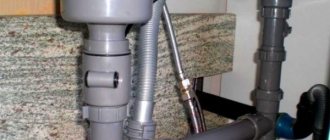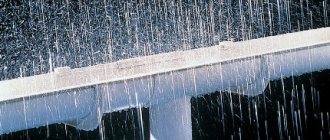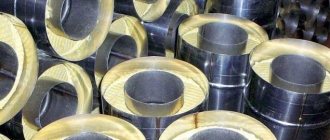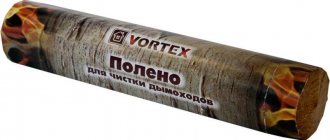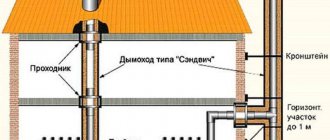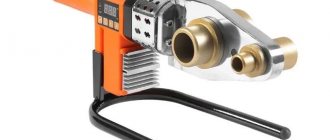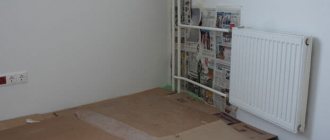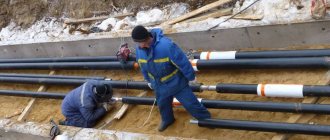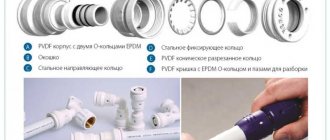Official website of the exclusive importer and distributor of METALOTERM chimneys in Russia
The only fireproof chimney pipes in the world are produced by the Dutch company Schiedel Metaloterm BV under the METALOTERM brand.
METALOTERM chimneys
Why do we have the right to proudly declare that Metalotherm chimneys are the right chimneys? EVERYONE needs to know this!
Buying a METALOTERM chimney is cheaper than not buying!
Metalotherm pipes (METALOTERM) are professional chimneys developed by ONTOP (Netherlands). This company has been well known to specialists for more than 50 years as a world leader in the production of ultra-reliable chimneys for marine shipbuilding, for equipment operating in difficult climatic and technological conditions (offshore oil and gas platforms and drilling sites, industrial facilities, mobile and stationary generator stations). Since 01.01.2020, Ontop BV has been part of the Schiedel Metaloterm BV group
All innovative technologies developed for industrial chimneys have been introduced into the production of smoke ducts for private housing construction .
| Go to the full catalog of chimneys | ||||
| Chimney sandwich | Metal chimneys | Corrugated pipes | Coaxial chimneys | Industrial pipes |
We all think about our safety and security. , METALOTERM chimney pipes equal . Real security is now available not only to owners of factories and ships :)!
What is it and what is it for?
This device is designed to remove smoke and gases from heating devices into the external environment. It is a smoke channel of various shapes and cross-sectional areas.
Another important function of the channel is to ensure proper draft in the fuel system.
Smoke removal structures are a must for stoves, fireplaces, and gas boilers.
Previously, when stove heating predominated, they were built mainly from brick. With the advent of gas units, steel chimneys became widespread.
How the chimney works
The basis of a metal chimney is made of metal pipes of different lengths. The design makes it easy to connect them using the socket method. Elbows and tees are intended for pipeline bends. The fasteners are crimp clamps and brackets.
A head is installed on top. It protects the drainage from snow and rain, serves to increase traction and decorate the roof.
Effective operation is also ensured by stands, pipes, deflectors, spark arresters and other parts required for installing a smoke exhaust device.
Types and designs
According to the type of structure, metal chimneys are divided into:
- single-walled Used as temporary outlets, for example, for stoves in bathhouses;
- two-layer, called “sandwich”. They consist of inner and outer pipes, between which insulation is laid;
- coaxial chimneys. A design of two channels that simultaneously removes smoke and supplies oxygen to the firebox. Used only for heating devices with a closed combustion chamber.
There are also:
- straight chimneys. They are installed vertically and lead out through the roof;
- side fasteners. They are brought out with the help of a knee and mounted on the wall of the house;
- the side internal ones go into a smoke shaft built into the wall, or they themselves are built into the load-bearing wall of the house.
Steel chimneys are made from various metals.
Made of black steel
Chimneys made from this material are low in cost. They do not have the best strength characteristics, but can stably withstand temperatures up to 500C.
To increase service life, enameled products and pipes with thickened walls are used. Chimneys of this type are installed more often in dachas, in bathhouses, where heating devices are not used so intensively.
Made from low alloy steel
Small additions of alloying components give such bends increased corrosion resistance and strength. Capable of withstanding operating temperatures of 1200 oC. Can be connected to fireplaces running on solid fuel.
Made from galvanized iron
Pipes made of this material practically do not rust, their price is lower than that of stainless steel. However, there are concerns about their negative impact on human health. When the heating temperature exceeds 419C, zinc begins to release toxic fumes.
In this regard, it is recommended to use galvanized products in systems with low operating temperatures up to 350C. There are no contraindications for their use in sandwich-type smoke removal devices. Here the internal channel is made of stainless steel, the external one is galvanized.
It should also be noted that a galvanized duct installed without insulation will last only 1-2 heating seasons.
Made of stainless steel
This type of steel has high heat resistance and resistance to acids and moisture. Smoke ducts made of stainless steel are made of both single and double-layer types. Tolerates peak load temperatures of up to 850 C.
Single structures are used as the inner part of outlets and for lining brick chimneys. The product is inserted into the old brick channel and connected to the boiler pipe.
Double-layer insulated chimneys have become the most common. They retain heat well, thanks to which they consistently provide proper traction.
Operating rules for repair and cleaning
The rules for operating chimneys prohibit:
- Use the chimney circuit to dry shoes and clothes.
- Light the heat generator with flammable fuel or fuel not designed for the smoke exhaust capacity.
A preventive inspection, during which the draft, integrity, tightness of the circuit, and cleaning of the chimney duct must be checked at least 2 times a year. The thickness of ash deposits in a pipe exceeding 2 mm is an unambiguous signal about the need for a circuit cleaning procedure.
Chimney cleaning can be done in 2 ways:
- Mechanically, using a special brush and other devices.
- Chemically, with the help of “miracle logs” placed in the firebox, which release compounds during combustion, causing soot to peel off from the walls of the chimney.
Advantages and disadvantages
The advantages of metal chimneys compared to brick ones include:
- lightness of design, variability of assembly configuration;
- optimal ratio of price, quality, ease of installation;
- simple and quick process of assembly and installation of the structure;
- smooth surface of internal walls on which combustion products do not linger.
Metal chimneys have limitations that should be considered among their disadvantages:
- high cost of individual stainless steel structures;
- impossibility of use at constant operating temperatures above 500C;
- With the exception of certain types of stainless steel, chimneys made of other metals are highly susceptible to rust.
Drawing and diagrams
Before installing a chimney pipe, you must first complete a standard design for the future pipe. It will display estimates of consumables, their quantities and the cost of completing the work. Next, a diagram and drawing of the entire structure is completed.
Chimney pipe installation diagram
Chimney outlet diagram
Design and installation of a chimney for a wood stove
*
Building regulations
The construction of a smoke removal device requires compliance with the construction rules set out in SNiP.
We list the main ones:
- the height of the straight chimney to ensure normal draft must be at least 5 meters;
- it should rise 50 cm above the roof ridge and be at a distance of 150 cm from it;
- connections of pipes in outlets or passages of walls and ceilings are prohibited;
- the diameter of the smoke channel should not be narrower than the Ø of the outlet unit of the heating unit;
- attached chimneys should not have more than three bends along the entire length of the channel.
Installation requirements according to SNIP
Heating and chimney mains are designed, installed and operated in accordance with the requirements of SNIP, as they can pose a threat to life:
- If the building has several heating appliances, it is necessary to connect separate metal chimneys to each of them.
- The cross-section and height of the pipe must provide natural draft.
- It is required that the diameter of the chimney for the stove matches the outlet pipe of the unit so that the system can ensure the removal of combustion products.
- The entire highway should not have more than 3 bends with horizontal sections of no more than 1 m.
- Deflections in the structure are unacceptable.
- In places where floors, walls and roofs pass, insulation from non-combustible materials is installed.
- The metal used must be resistant to chemical attack and condensation.
- Absolute smoothness of the inner surface of the line is necessary to ensure high-quality removal of combustion products.
- The outer sections of the chimney should be provided with thermal insulation.
- Fixation of pipes should be carried out every 2 m with fastening to supporting structures. High chimneys are reinforced with guy wires.
- In places where the channel turns, it is necessary to install inspection windows and bowls to collect condensate.
Traction force
The draft of a straight smoke channel depends on its diameter and height. To correctly select these parameters, use a special table. A height of 5 m is considered optimal.
For horizontal tension channels, the length providing traction force is 3 meters.
When combining both sections, it is recommended to increase the height of the pipe by one meter for each meter of horizontal section.
To increase traction, you can use one of the following options:
- increase the height of the outlet above the roof;
- attach a special weather vane to the head;
- use an electric smoke extractor.
Chimney ground loop
The role of the chimney is not only to safely remove combustion products into the atmosphere, but also to protect a person from electric shock if he is struck by lightning. To avoid this, you need to use RD 34.21.122-87 “Instructions for the installation of lightning protection of buildings and structures” and install grounding:
- It does not need to be erected if reinforcement is laid in the chimney foundation, and any metal parts attached to reinforcing bars are present in the foundation lining. In this case, the chimney already has a lightning rod.
- To protect the building from lightning strikes, a ground loop is used. The grounding loop norm is specified in the PUE (electrical installation rules) clause 1.7.101, clause 1.7.103. It needs to be calculated and constructed from steel rods, fittings or pipes that have a circular cross-section. The grounding loop has the form of an equilateral triangle with a side ≥ 2 m. At the top of each corner, a vertical support must be driven to a depth of 2 m. The distance between them must be at least 1.5 m. When the elements are in the ground at the base of the pipe, they must be secured with nuts, bolts or welding. When making grounding, you need to choose longer supports, the thickness of which is indicated in the rules for electrical installations - table 1.7.4.
Lightning protection of a chimney
Today, ready-made kits (KU) for grounding a house are sold - screens made of armored cables, reinforcement or pipe structures.
Making and installing a chimney with your own hands
The correct selection and proper installation of a ready-made chimney kit is important for its further functioning. It would be wise to entrust such work to professionals. If you have the appropriate skills and are confident in your abilities, you can assemble and install a smoke exhaust device yourself.
The installation process includes the following steps:
- determining the chimney configuration;
- calculation of the required pipe size depending on the power and size of the outlet pipe of the heating device;
- marking passage holes on the wall and ceilings;
- drilling these holes;
- laying thermal insulation in them;
- connecting the initial section of the pipe to the heating device;
- assembly and fastening of the chimney units, bringing the final part out;
- securing the sleeve in the outlet openings;
- installation at the end of the chimney of wind protection and elements that prevent the formation of condensation and its freezing at the pipe outlet;
- finishing of the chimney, both on the roof and from the inside.
Drawing and diagrams
Size calculation
Determine the power of the heating device.
We measure the cross-section of the outlet pipe of the boiler or furnace.
Using the table, we calculate the dimensions of the chimney:
Installation procedure for metal chimneys
During installation work, you need to take care of fire safety: think about how to insulate the chimney pipe through the wall? For insulation, ceramic mixture, fire-resistant paper LYTX-2368, CIP-2368, SUPERWOOL 607 paper, fire-resistant mastic SUPERWOOL 607 HT MASTIC, KAOWOOL MASTIK, MKR ceramic tubes and other thermal insulation materials are used.
Installation technology:
- You need to install the chimney system from the stove, going up to the top. The beginning of the upper pipe is inserted into the upper part of the lower pipe.
- At the junction of the chimney elements, an inspection window must be provided.
- Joints, bends, joints, and other components are connected with clamps and coated with heat-resistant sealant rated at 1000℃.
- On a vertical section of the pipe, the fastening distance should be ≥ 150 m, and on horizontal sections ≥ 100 cm.
- Chimney systems pass through the walls, ceiling and onto the roof. The diameter of the hole should be significantly larger than the diameter of the chimney. The pipe must not touch the hole. To do this, cut out a square metal plate. You will also need a stainless steel pass-through glass on which the insulating material is reinforced.
- The installation of the cap completes the work. It protects the structure from external precipitation and debris.
Chimney assembly diagram
Rules for organizing the height of the chimney
If you install the pipe yourself, you can make a mistake in calculating the length of the chimney. In this case, you need to read the instructions included with the equipment or consult with experienced stove makers.
Installation features
The installation is designed so that most of the smoke duct is indoors. This reduces heat loss.
Correct assembly of the chimney begins from the heating device. Pipe connections are made using the socket method: the upper part is inserted into the lower part up to the latch, if there is none, half the diameter of the channel.
Wall fastenings are located at least 1.5 meters apart from each other. Bends and tees are mounted on separate brackets.
Contact of structural elements with the communications of the house is not allowed.
Life time
To make the system last longer, the question arises: what can you use to wrap a metal chimney pipe? The pipe is insulated with hydro- and fire-resistant thermal insulation:
- foil insulation;
- thermal insulation;
- sandwich pipes.
According to experts, the service life is from 10 to 15 years.
For your information! However, in reality, the service life of metal chimney structures is 5 years.
In order for the system to last for a long time, it is necessary to carry out preventive maintenance such as cleaning and diagnostics on time. Failure to comply with the requirements can lead to a fire hazard or loss of life.
Frequent errors and problems during installation
Low height of the chimney device. As a result, traction is lost.
The chimney outlet must be higher than the ventilation ducts if they are constructed in the same block. Otherwise, backdraft occurs.
Choosing a chimney based only on low price. Single-wall pipes made of ferrous metal, thin galvanized are suitable only as temporary devices. Even stainless steel, not all brands are heat resistant enough. Preference should be given to alloys that can withstand temperatures of 700 oC and above: AISI 304, 309, 316, 321.
We recommend that you read
- Chimney repair
- Stainless steel chimneys
- Boiler chimney
- Chimney height
- Chimney sandwich
- Metal chimneys
- Chimney cable stays
- Chimney masts
- Chimneys for boiler rooms
- How to calculate a chimney
- Typical designs and drawings of chimneys
- Industrial chimneys
- Chimney calculation
- Design of industrial chimneys
Expert advice
The highest temperature of the system is observed at the point where the chimney is connected to the heat generator. Therefore, the initial part of the insulated chimney must be uninsulated, made of heat-resistant material, in order to prevent overheating.
It is better to place the condensate collector indoors. Outside in severe frost it can turn into ice and burst the container.
The traditional umbrella fungus does a poor job of extinguishing sparks and providing wind protection. Instead, it is recommended to install a deflector on the top of the straight pipe, which is fixed with self-tapping screws.
Purpose
According to their purpose they are distinguished:
- products designed for extremely heavy loads and high-pressure environments;
- heat-resistant pipes for boilers;
- bearing products;
- main pipes;
- pipe products for geological exploration and oil production;
- water and gas pipes;
- products for the chemical industry.
To remove combustion products, special fireproof pipes are needed for stoves, fireplaces, and boilers. Such products must withstand not only high temperatures, but also aggressive environments containing sulfuric and nitric acids released during fuel combustion. In some cases, temperatures can reach 1000 degrees.
For the installation of chimneys, manufacturers produce heat-resistant pipes - the steel for which belongs to the austenitic group (AISI 304), which contains a high content of nickel, carbon and chromium. These alloying elements are necessary to give the alloy high resistance to corrosion processes and increased ductility.
Heat-resistant stainless pipes with a wall thickness of at least 0.5 millimeters are capable of ensuring absolute operational safety at high temperatures.
How to insulate
Chimney insulation is an urgent task in the Russian climate.
For this, they have already come up with a sandwich system, when a pipe made of insulation is put on the outlet channel, and an external pipe is placed on it, acting as a protective box.
The so-called two-layer system with insulation is now widespread.
You can make a similar design yourself. Basalt wool is used as insulation, which is applied to the inner part, wrapped with reinforced mesh and an outer pipe is put on top.
